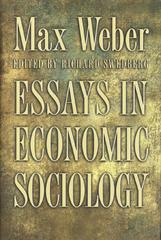The following table shows demographic characteristics for two countries, A and B in a given period. People are assumed to live for up to two periods, corresponding to young and old generations. Each country has equal males and females in every generation and total initial populations summing to 100. There is no immigration or emigration. Initial age Fertility Mortality distribution Rate Rate (%) Young in A 60 1.6 5 Old in A 40 O 100 Young in B 50 2.4 10 Old in B 50 0 100 In the next period, O the population of country A will exceed that of country B. O the populations of A and B will remain equal. O the population of country B will exceed that of country A. ) it is not possible to determine which country will have the biggest population using the information provided.Question 10 [1 point} Consider an economy that is described by a basic Solow growth model. If total factor productivity is constant, which of the following statements does n_ot describe the steady state of this economy? 0 Output per worker, capital per worker, and consumption per worker grow at the same rate as the workforce. O The growth rate of the capital-labour ratio is zero. 0 The capital-labour ratio is constant. 0 Aggregate output, capital, and consumption grow at the same rate as the workforce. Question 12 [2 points) Suppose there are only two goods produced in the world: DVDs, which are traded internationally, and hair cuts, which are not. Assume that transport costs are negligible. The table shows information on the production and prices of DVDs and hair cuts in the USA and China. [where 3 is the symbol for the Chinese currency, Renminhi}: DVDS per capita Ha" Cuts per Price of DVD: Price Of Ha" caplta Cuts -- Using the World basket of goods the purchasing power parity exchange rate is 0 $1 = 35 0 $1 = 112.06 C)$1=3s? O $1 = 3133 The advantage of the poverty gap measure with respect to the poverty headcount measure is that the poverty gap counts the number of people who are poor accurately and the headcount measure does not. the poverty gap determines how many more calories are needed for a person to have the minimum daily number of calories humans need and the headcount ratio does not. the poverty gap determines how distant each individual is from the poverty line, while the poverty headcounts does not. the poverty gap determines the income gap among the poor and the headcount measure determines only the number of poor










